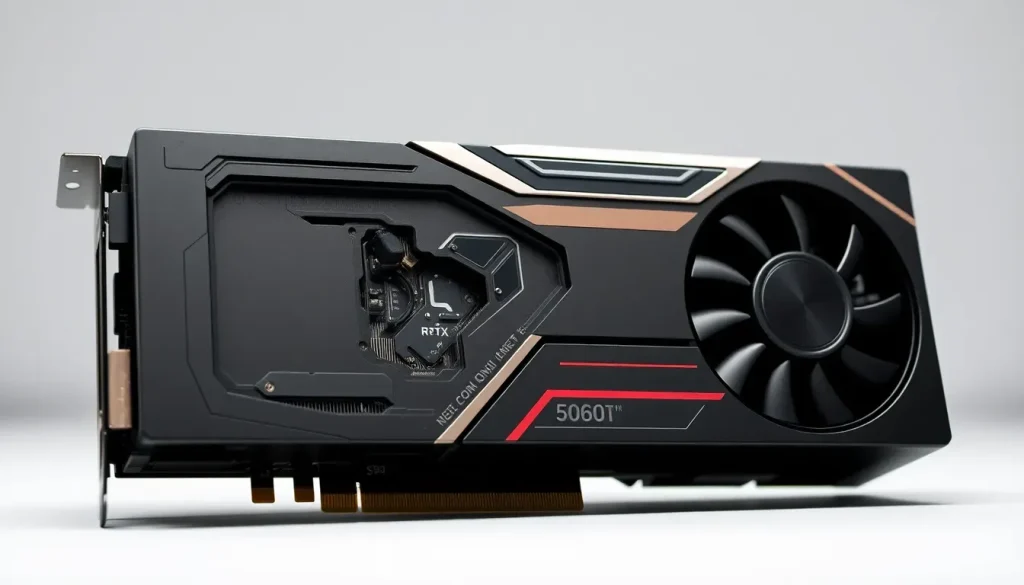Reviving a GeForce RTX 5070 Ti with a PCB Hole by Merging it with a Radeon RX 580

The world of graphics cards is constantly evolving, with new innovations and surprising experiments capturing the attention of tech enthusiasts. Recently, a remarkable feat was achieved by Paulo Gomes, a YouTuber known for his hardware repair expertise. He managed to revive a seemingly irreparable NVIDIA GeForce RTX 5070 Ti by fusing it with an AMD Radeon RX 580. This extraordinary combination not only sparked curiosity but also raised questions about the limits of GPU repair and modification.
What might seem like a simple act of restoring a damaged component actually delves into the complexities of hardware engineering. The project, humorously titled “Brasília,” has garnered significant attention for its innovative approach. Let's explore how this incredible resurrection was accomplished and what it means for the future of GPU technology.
How a GeForce RTX 5070 Ti was revived using a Radeon RX 580
The story begins with a GeForce RTX 5070 Ti that had suffered catastrophic damage, resulting in a large hole in its PCB (printed circuit board). This damage occurred due to a severe short circuit, rendering the GPU unusable in its original state. However, Gomes and his team devised a plan to breathe new life into the graphics card by merging it with the functional components of an AMD Radeon RX 580.
To achieve this fusion, several technical steps were taken:
- Direct soldering: The team used soldering techniques to join key components from both GPUs.
- Voltage bypasses: They created bypasses for voltage regulation modules (VRMs) to ensure consistent power delivery.
- External cabling: Cables were employed to link the two GPUs, effectively creating a bridge between them.
The VRM from the Radeon RX 580 now provides power to the graphics chip and memory of the GeForce RTX 5070 Ti. While this unconventional solution yielded positive results—allowing the card to power on and display video—it also introduced significant risks. The makeshift wiring was not stable, and it was noted that the cables could potentially melt under the right conditions.
The unexpected results of the fusion
Despite the inherent risks of this FrankenGPU, the results were astonishing. The modified GeForce RTX 5070 Ti not only powered up but was also detected by the operating system, indicating that it had regained some level of functionality. However, the success of the project came with caveats:
- Instability: The voltage levels were erratic, leading to potential overheating issues.
- Questionable Performance: Although the card displayed a video signal, its performance in demanding tasks was untested.
- Safety Concerns: The risk of fire hazards due to faulty wiring was a significant concern.
To illustrate the potential dangers, consider that the combination of components from different manufacturers and eras can lead to unpredictable behavior. The merging of technologies designed for distinct architectures can create compatibility issues that were never intended to be resolved in the first place.
Future testing and expectations
Looking ahead, the team plans to put this newly resurrected GPU through rigorous testing. It has been handed over to a local influencer who specializes in hardware benchmarks. The intention is to see how the card performs under stress, such as running demanding benchmarks like FurMark or Superposition.
This upcoming testing phase will be crucial in determining whether the modifications can withstand real-world applications. Here are some factors that will be examined during the tests:
- Thermal performance: Monitoring temperatures under load to assess stability.
- Power consumption: Evaluating the efficiency and reliability of the power delivery system.
- Overall functionality: Checking for artifacts or performance degradation during gaming or rendering tasks.
It will be fascinating to observe how this hybrid GPU performs under pressure and whether it can survive demanding scenarios. The implications of this experiment extend beyond mere curiosity; they challenge our understanding of hardware limitations and the potential for innovative repairs.
The implications of hardware fusion
This endeavor raises a significant question: what are the boundaries of hardware repair and modification? As technology advances, the line between traditional and experimental practices blurs. The successful fusion of the GeForce RTX 5070 Ti and Radeon RX 580 illustrates that creative approaches can lead to unexpected outcomes.
Such projects encourage a culture of exploration and innovation within the tech community. They highlight the importance of understanding hardware on a fundamental level, allowing enthusiasts to push the boundaries of what is possible. Challenges like these inspire:
- Community collaboration: Many tech enthusiasts share knowledge and techniques, contributing to a collective understanding of hardware capabilities.
- Educational opportunities: Projects like this serve as real-world case studies for aspiring engineers and tech lovers interested in hardware repair.
- Innovation in design: The ingenuity displayed in this project may prompt manufacturers to consider modular designs that allow for easier repairs and upgrades.
The impact of such experiments could lead to a future where repairability is prioritized in the design of consumer electronics, fostering sustainability and reducing electronic waste.
As the tech community eagerly awaits the results of the forthcoming benchmarks, the story of the “Brasília” GPU serves as a reminder of the creativity and resourcefulness that define the world of hardware engineering.
To get a visual perspective on this incredible experiment, check out this video showcasing the process:




Leave a Reply